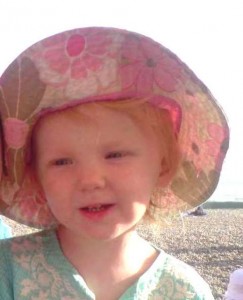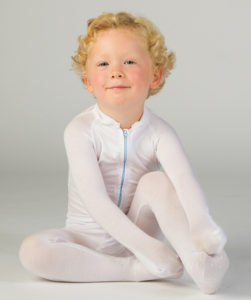AppId is over the quota AppId is over the quota Main Category: Breast Cancer
Also Included In: Pregnancy / Obstetrics;??Eczema / Psoriasis
Article Date: 20 Oct 2012 – 0:00 PST
Current ratings for:
High Levels Of Hormones During Pregnancy Associated With Higher Risk For HR-Negative Breast Cancer 

Increased concentrations of the pregnancy hormones estradiol and progesterone were associated with an increased risk for hormone receptor-negative breast cancer diagnosed before age 50, according to the results of a nested case-control study presented at the 11th Annual AACR International Conference on Frontiers in Cancer Prevention Research.
Annekatrin Lukanova, M.D., Ph.D., http://www.eczemablog.net/associate professor at the German Cancer Research Center in Heidelberg, Germany, and colleagues examined the effects of hormonal exposure during early pregnancy and its possible association with risk for maternal breast cancer.
“Pregnancy influences maternal risk for breast cancer, but the association is complex and the biological mechanisms underlying the associations are unknown,” Lukanova said. “Understanding the mechanisms underlying the protective effect of childbearing on cancer risk can form the basis for primary prevention of breast cancer.”
Lukanova and colleagues used the Northern Sweden Maternity cohort to conduct a nested case-control study of 417 controls and 223 women who had donated blood samples during their first trimester of pregnancy and were later diagnosed with breast cancer. About three quarters of the breast cancer cases were hormone receptor (HR)-positive.
The researchers examined two groups of hormones: The first group included estradiol, estrone and progesterone, the concentrations of which increase substantially with pregnancy progression. The second group included testosterone and insulin growth factor-1 (IGF-1). During early pregnancy, concentrations of testosterone and IGF-1 are largely similar to prepregnancy concentrations.
“We found that circulating concentrations of IGF-1 and testosterone are directly associated with risk for HR-positive breast cancer, in line with studies in nonpregnant women,” Lukanova said.
Results indicated a heightened risk for HR-negative breast cancer diagnosed before 50 years of age with increased levels of estradiol and progesterone.
Lukanova noted that this study was small, that the hormones were measured during the first trimester of pregnancy only, and that further and larger studies will be necessary to characterize the association of pregnancy hormones with risk for hormone-defined maternal breast cancer.
Abstract:
B75 Pregnancy hormones and maternal risk of hormone receptor-defined breast cancer. Annekatrin Lukanova1, Egle Tolockiene2, Helena Schock1, Kjell Grankvist2, Hans Ake Lakso2, Helja Marja Surcel3, Goran Wadell2, Anne Zelenuich-Jacquotte4, Paolo Toniolo4, Eva Lundin2. 1German Cancer Research Center (DKFZ), Heidelberg, Germany, 2University of Umea, Umea, Sweden, 3National Institute for Health and Welfare, Oulu, Finland, 4New York University School of Medicine, New York, NY.
Introduction: Hormonal exposure during pregnancy is believed to be associated with subsequent maternal risk of breast cancer, but so far limited epidemiological data are available.
Study design: A case-control study (223 cases and 417 controls) was nested within the Northern Sweden Maternity Cohort to explore the associations between pregnancy concentrations of sex steroid hormones and insulin-like growth factor I (IGF-I) with maternal risk of breast cancer by hormone receptor (HR) expression of the tumors. The study included women who had donated a blood sample during the first trimester of their first full-term pregnancy. Most cases had HR-positive disease: 171 (77%) estrogen receptor-positive (ER+), 157 (70%) progesterone receptor-positive (PR+) and 152 (68%) ER+/PR+ tumors. Estradiol, estrone, progesterone and testosterone were measured by high-performance liquid chromatography tandem mass spectrometry. Sex hormone-binding globulin (SHBG) and insulin-like growth factor I (IGF-I) were measured by immunoassays. For each hormone, the difference (residual) between the actual assay value for each subject and the estimated mean determined for the day of gestation when the sample was drawn was computed by local linear regression. Conditional logistic regression was used to calculate odds ratios (OR) and 95% confidence intervals (CI).
Results: For HR-positive tumors, a significant direct association was observed with circulating concentrations of testosterone (e.g. OR for ER+ in the top versus bottom tertile of 1.8 (1.1-3.0), p<0.02) and IGF-I (e.g. OR for ER+ in the top versus bottom tertile of 2.0 (1.2-3.3), p<0.01). For HR-negative disease, risk estimates for a doubling of estrogens, progesterone and SHBG concentrations were above unity, but did not reach statistical significance with the exception of progesterone for PR-negative tumors (OR 2.0 (1.0-3.9), p<0.04). In analyses limited to ER-negative tumors diagnosed up to age 50 (n=38), these associations were stronger, but only of borderline significance. For PR-negative tumors diagnosed up to age 50 (n=49), the associations were significant for estradiol (OR 1.8 (1.0-3.1), p<0.04), progesterone (OR 2.6 (1.1-6.1), p<0.03) and SHBG (OR 1.8 (1.0-3.0), p<0.04). Adjustments for maternal height, weight, smoking, hypertension during pregnancy, child's sex, weight and length had negligible effect on risk estimates. Associations were similar by combined ER/PR tumor status or when limited to cases diagnosed ?10 years after blood donation.
Conclusions: In this nested case-control study hormone concentrations during early pregnancy were associated with risk of maternal breast cancer but the associations differed by hormone receptor expression of the tumors. For hormones with placental contribution to circulating concentrations (estrogens and progesterone), there were indications for positive associations with risk of maternal HR-negative breast cancer. For hormones, with similar concentrations during early pregnancy and in the non-pregnant state (testosterone and IGF-I), direct associations with HR-positive breast cancer were observed, in line with most available epidemiological data in non-pregnant women. Larger studies are necessary to characterize the association of pregnancy hormones with risk of hormone-defined maternal breast cancer.
Article adapted by Medical News Today from original press release. Click ‘references’ tab above for source.Visit our breast cancer section for the latest news on this subject. Please use one of the following formats to cite this article in your essay, paper or report:
MLA
7 Apr. 2013.
Please note: If no author information is provided, the source is cited instead.
‘High Levels Of Hormones During Pregnancy Associated With Higher Risk For HR-Negative Breast Cancer‘
Please note that we publish your name, but we do not publish your email address. It is only used to let you know when your message is published. We do not use it for any other purpose. Please see our privacy policy for more information.
If you write about specific medications or operations, please do not name health care professionals by name.
All opinions are moderated before being included (to stop spam)
Contact Our News Editors
For any corrections of factual information, or to contact the editors please use our feedback form.![]()
Please send any medical news or health news press releases to:
Note: Any medical information published on this website is not intended as a substitute for informed medical advice and you should not take any action before consulting with a health care professional. For more information, please read our terms and conditions.
View the original article here
Eczema Blog






